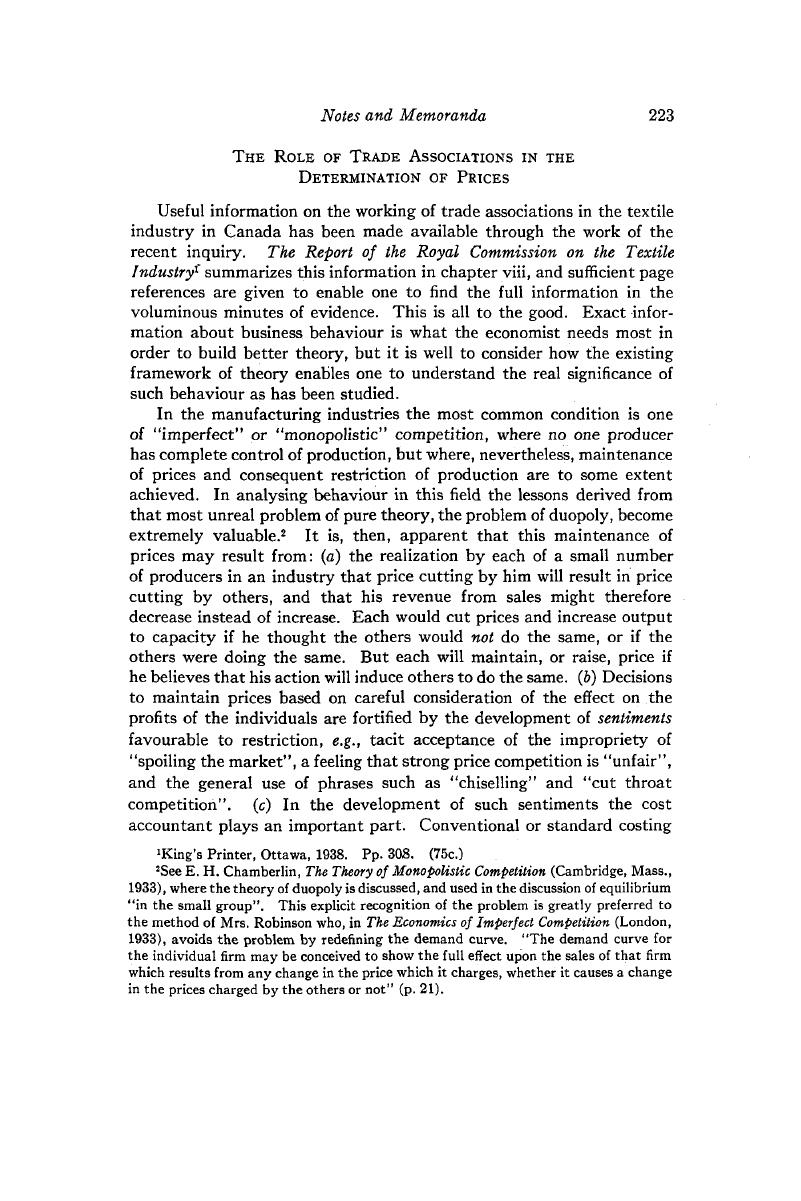Article contents
The Role of Trade Associations in the Determination of Prices
Published online by Cambridge University Press: 07 November 2014
Abstract

- Type
- Notes and Memoranda
- Information
- Canadian Journal of Economics and Political Science/Revue canadienne de economiques et science politique , Volume 4 , Issue 2 , May 1938 , pp. 223 - 227
- Copyright
- Copyright © Canadian Political Science Association 1938
References
1 King's Printer, Ottawa, 1938. Pp. 308. (75c.)
2 See Chamberlin, E. H., The Theory of Monopolistic Competition (Cambridge, Mass., 1933)Google Scholar, where the theory of duopoly is discussed, and used in the discussion of equilibrium “in the small group”. This explicit recognition of the problem is greatly preferred to the method of Mrs.Robinson, who, in The Economics of Imperfect Competition (London, 1933)Google Scholar, avoids the problem by redefining the demand curve. “The demand curve for the individual firm may be conceived to show the full effect upon the sales of that firm which results from any change in the price which it charges, whether it causes a change in the prices charged by the others or not” (p. 21).
3 Report of the Royal Commission on the Textile Industry, p. 144.
4 Ibid., p. 139.
- 1
- Cited by




